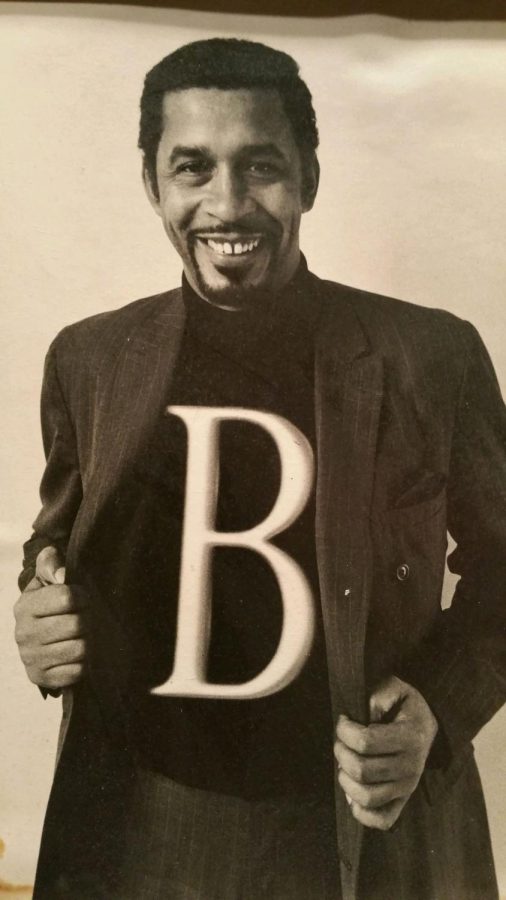Illini Media honors longtime artist and cartoonist
Photo courtesy of Mary Ellen Brown
Robert “Buck” Brown was an artist and cartoonist during his time with Illini Media, and extended his talents towards other publications with Playboy and Ebony magazine.
Apr 8, 2022
Last updated on May 6, 2022 at 05:05 p.m.
Robert “Buck” Brown, 1966 alumnus of the University of Illinois at Urbana-Champaign, noticed the empty black chalkboard and saw the space filled with a drawing of a truck. Gazing in awe, Brown would master his craft to later make his break as an artist for publications including Playboy and Ebony magazines until his passing in July 2007.
Brown’s fifty to sixty years of experience will be honored with his inauguration into the Illini Media Hall of Fame Class of 2022 this month.
“He was a survivor,” said Brown’s wife Mary Ellen Brown. “He is a survivor, and he’s ambitious. And even though he never got encouragement as a child, he was able to come out of it on top.”
Throughout his educational career, he faced rejections from The New Yorker and The Saturday Evening Post. He eventually mailed a collection of sketches to Playboy, thinking they would reject him.
Get The Daily Illini in your inbox!
Founder and Editor-in-Chief of Playboy magazine Hugh Hefner accepted Brown’s eighth sketch — a reference to jazz trumpeter Miles Davis. Brown’s ability to create satirical pieces from 1961 enabled him to contribute around 600 cartoons to the magazine for over 45 years.
“One of the things about Buck was that he was a consummate humorist and observer of the American scene,” said Andrew J. Sordoni III, a longtime collector of American illustration and comic art. “He had a tremendous sensitivity to all of the issues of the day, and he loved the people.”
Always carrying a sketchpad, Brown focused on creative works that included “slice-of-life” scenes, record covers from Chiaroscuro Records and soul-genre paintings. Mary Ellen Brown was most fond of the animal comic strips that Brown created in his home studio because those were the pieces that they could present to a broader audience.
As an African American budding artist in the ’50s and ’60s, he knew he could not become an artist deep down. In his 1984 interview with Playboy’s Cartoon Editor Michelle Urry, Brown described how he came to his perspective on success as an artist.
“Coming up at the particular time that I did, you had to be resilient,” Brown said. “You had to be able to laugh no matter what, you know? I mean you felt like crying inside but … you always managed to make light of the situation.”
Brown did not learn to draw risqué pieces until working with Playboy, adding his sense of humor to the pieces to personalize them. Additionally, his photographic memory enabled him to find the light-hearted side of life’s obstacles or what Playboy’s Eileen Guo coined as Brown’s fortes — “upending norms and detoxifying off-limit topics.”
Brown supported himself throughout his educational career by joining the Air Force when he was 19 years old. In his free time, he would make satirical sketches of a ranking official in his unit.
“Other people knew it (was him) and they cracked up each time,” Mary Ellen Brown said. “Buck realized how powerful he could be by just saying something.”
Brown received an early honorable discharge and attended Woodrow Wilson College while driving a bus as a Chicago Transit Authority driver. After graduating, he continued his education at the University of Illinois to achieve a Bachelor’s degree in Fine Arts, where he met his wife during his junior year.
In his interview and description of the interview with Larry Crowe from “The HistoryMakers,” Brown described his strained relationship with his parents.
Mary Ellen Brown realized how vital family meant to him. They got back together after running into each other at the art building on campus. The two of them got married in White Plains, New York, where she was working as a programmer.
“He had, you know, a hard life there for a while,” Mary Ellen Brown said. “But he got better after he met me, and we got married. He had support. He had a person working with him. We were a team.”
They had opposite personalities but complemented each other throughout their careers while raising their son Robert “Bobby” Brown and daughter Tracy Hill.
“I am definitely daddy’s little girl,” Hill said. “Always was, and always will be. He was my hero. He was my original Superman. He was just my everything.”
Since his passing, the family keeps Brown’s memory alive by placing his artwork around the house, telling stories about him and treating the art studio as a memorial.
“My father comes through me all the time,” Bobby Brown said. “Because we spent so much time together and him sharing with me life lessons, that’s where we connected.”






